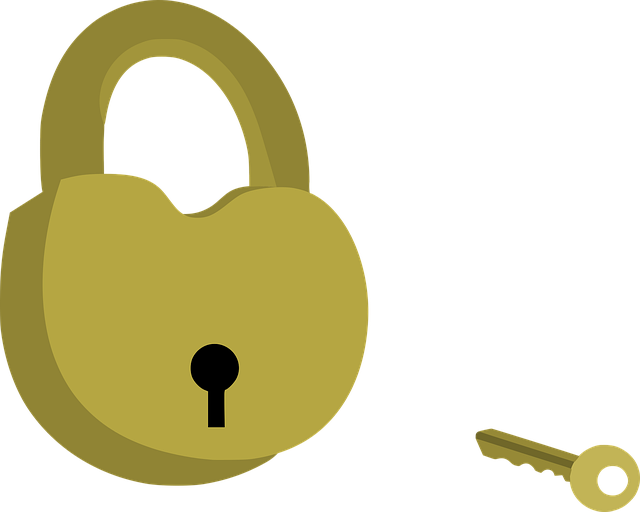Multi-Factor Authentication (MFA) significantly bolsters the security of smart home electronic locks by requiring multiple verification methods like passwords, biometric data, or tokens. This advanced system makes unauthorized entry much harder, protecting sensitive information in both residential and commercial settings. A guide is provided for implementing MFA in smart home locks, focusing on choosing compatible solutions, assessing lock compatibility, setting up management, integrating MFA, and thorough testing. By balancing security and user experience, MFA ensures convenient access while safeguarding high-security areas.
In today’s digital age, securing high-security areas is paramount. Multi-factor authentication (MFA) emerges as a game-changer, offering robust protection beyond traditional passwords. This article delves into the world of MFA and its transformative power in enhancing security measures, particularly with the integration of smart home electronic locks. We explore practical steps for implementation, address common challenges, and emphasize user experience, ensuring a secure yet seamless access control system for your digital haven.
Understanding Multi-Factor Authentication (MFA) and its Benefits in High-Security Environments
Multi-Factor Authentication (MFA) is a security protocol that requires users to provide multiple forms of identification before granting access to sensitive areas or systems. Unlike traditional passwords, MFA adds an extra layer of protection by demanding additional verification methods, such as biometric data (e.g., fingerprints or facial recognition), time-based one-time passwords (TOTP), or physical tokens. This multi-layered approach significantly enhances security in high-security environments, making it particularly valuable for smart home electronic locks and other critical infrastructure.
In the context of smart home electronic locks, MFA ensures that unauthorized individuals cannot gain entry even if they obtain a user’s password. By combining something the user knows (password), something they have (a physical token or smartphone app), and potentially something they are (biometric data), MFA makes it far more difficult for malicious actors to compromise security. This advanced authentication method is essential in preventing unauthorized access, protecting sensitive information, and maintaining the integrity of high-security areas within residential and commercial properties alike.
The Role of Smart Home Electronic Locks in Strengthening Security
Smart home electronic locks are transforming the way we secure our high-security areas, offering a sophisticated and modern approach to traditional locking mechanisms. These advanced devices go beyond basic key or password access, incorporating multiple factors of authentication to ensure unparalleled security. By integrating biometric data, such as fingerprint or facial recognition, along with secure digital codes or tokens, smart locks provide an additional layer of protection.
This multi-factor authentication significantly reduces the risk of unauthorized entry and makes it much harder for intruders to gain access. Moreover, these locks can be remotely monitored and managed through smartphone apps, allowing homeowners or facility managers to grant or revoke access privileges instantly, enhancing convenience and security in equal measure.
Implementing MFA for Smart Locks: A Step-by-Step Guide
Implementing Multi-Factor Authentication (MFA) for smart home electronic locks is a robust way to enhance security in high-security areas. Here’s a step-by-step guide to help you navigate this process effectively:
1. Choose an MFA Solution: Select an MFA solution that integrates seamlessly with your smart home system. Many modern solutions offer APIs and SDKs, making integration straightforward. Look for features like biometric authentication (fingerprint or facial recognition), one-time passwords (OTPs), or push notifications to ensure a robust security framework.
2. Assess Your Smart Lock Compatibility: Ensure your smart locks support third-party MFA integrations. Most modern smart home electronic locks have this capability, but it’s essential to verify compatibility before proceeding. Consult your lock manufacturer’s documentation or contact their support for detailed instructions on integrating MFA.
3. Set Up Centralized Management: Create a centralized management system for your smart locks and MFA. This could be through a dedicated security app or a smart home hub that supports MFA. Configure access control policies, user roles, and permissions to ensure only authorized individuals can manage the system.
4. Integrate MFA with Smart Locks: Follow the specific instructions provided by your chosen MFA solution and smart lock manufacturer. Typically, this involves configuring the locks to accept MFA-authenticated access attempts. This step may include pairing the locks with the MFA service, setting up user profiles, and testing the integration.
5. Test and Iterate: Once set up, thoroughly test the system. Simulate various scenarios, such as failed login attempts, biometric scanning issues, or network connectivity problems, to ensure smooth operation under pressure. Adjust settings and policies as needed based on these tests.
Overcoming Challenges and Ensuring User Experience with Multi-Factor Access Control
Implementing multi-factor authentication (MFA) in high-security areas, such as smart homes equipped with electronic locks, presents unique challenges. One of the primary concerns is ensuring a seamless user experience while maintaining robust security. Users expect quick and convenient access to their properties, so any additional steps or delays in the access control process could be frustrating.
To overcome this, modern MFA solutions integrate seamlessly with smart home systems. Biometric authentication, for instance, can utilize fingerprint scanners or facial recognition technology already present in many electronic locks. Alternatively, secure mobile apps allow users to quickly and easily generate one-time passwords (OTPs) without incurring significant delays. By leveraging existing hardware and software infrastructure, MFA can be implemented without compromising the user experience, providing both enhanced security and convenience for high-security areas like smart homes.
Multi-factor authentication (MFA) is transforming high-security areas, particularly in the realm of smart home electronic locks. By combining something the user knows (like a password), something they have (like a token or smartphone), and/or biometric data, MFA significantly enhances security without compromising user experience. As technology evolves, integrating MFA with smart home electronic locks becomes increasingly accessible, offering homeowners and businesses peace of mind in today’s digital era.
